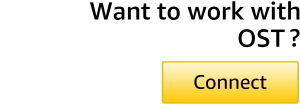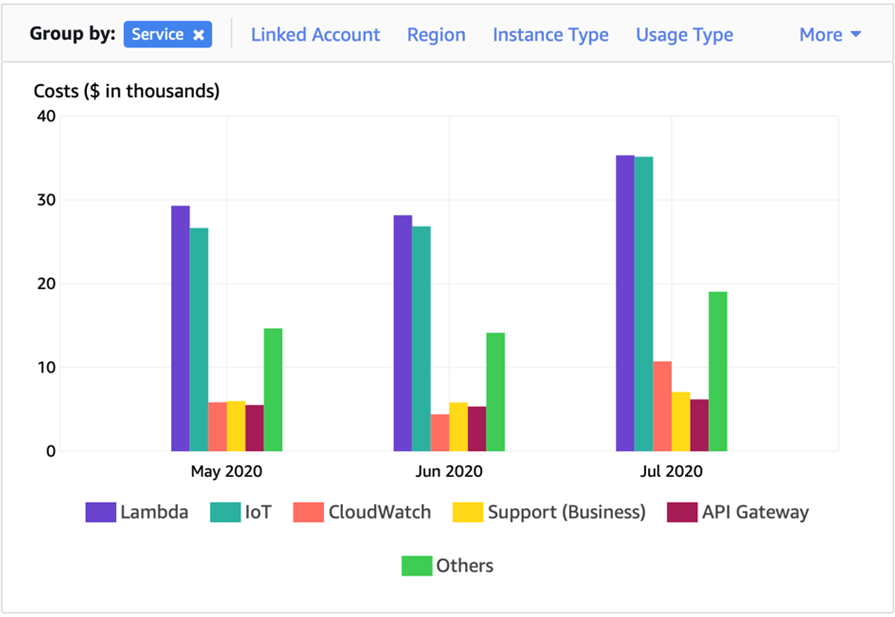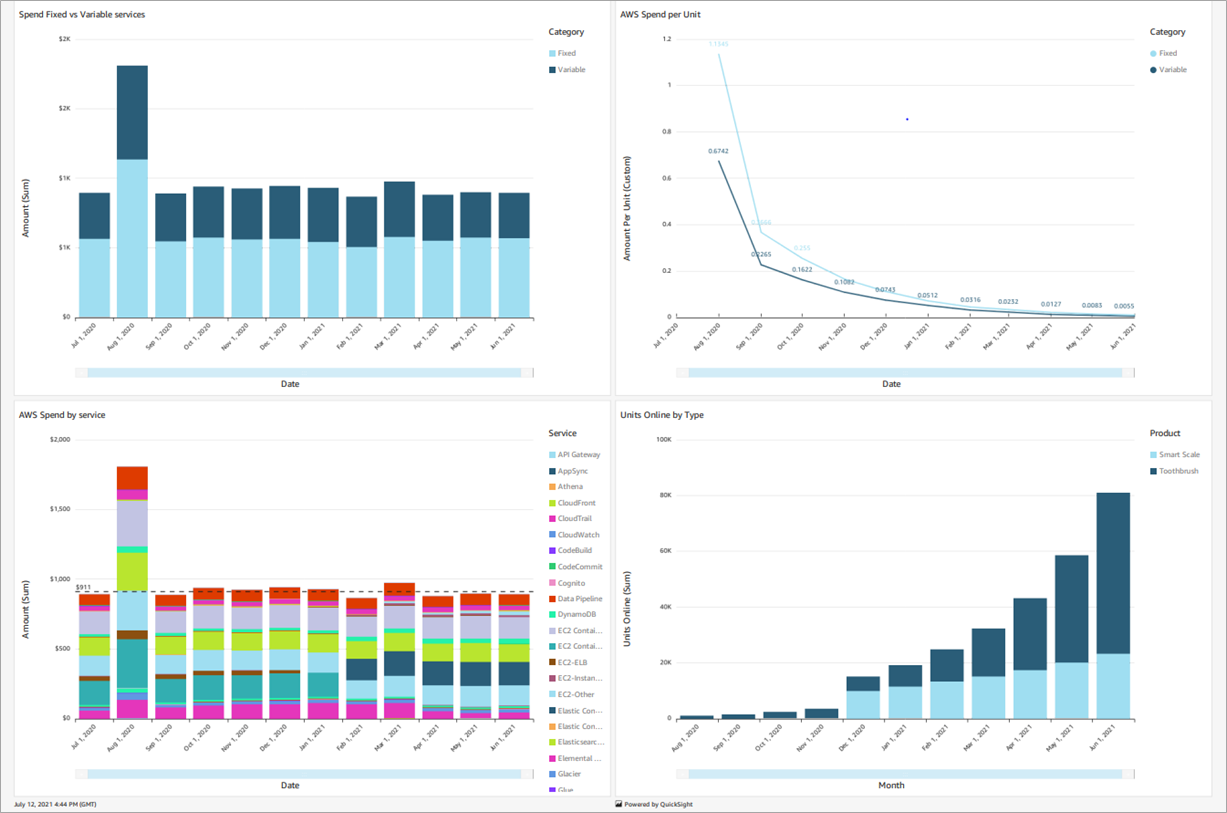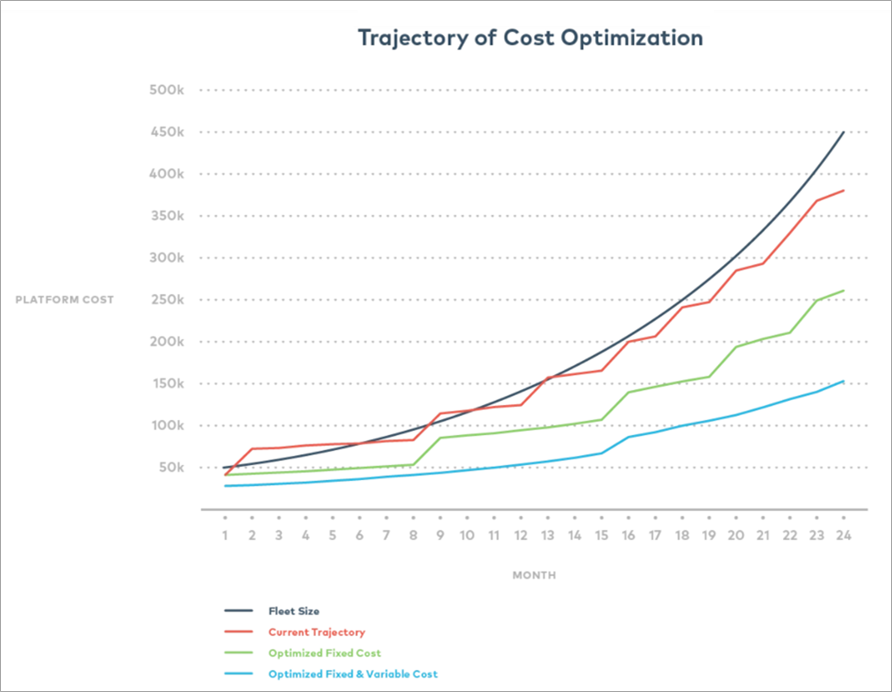AWS Partner Network (APN) Blog
Best Practices from OST for Optimizing IoT Cloud Platform Costs and Performance on AWS
By Amanda Malaric, IoT Development Consultant – OST
 |
| OST |
 |
When working with an Internet of Things (IoT) solution and expertly crafted architecture, new features can be implemented in record time, giving your product a real competitive edge.
But what happens to costs when those new features are not monitored? How do you scale your Amazon Web Services (AWS) environment as your fleet grows?
IoT platform managers continually strive to update and evolve platforms, and the largest pain point is cost.
Common challenges include:
- When product owners ask about new feature sets, you need to understand the cost of ownership around implementing them.
- After going through an initial sizing, you’re completely off from original estimations.
- Business is doing well and the sales forecast has exceeded expectations, but your architecture isn’t growing to meet demand.
If these scenarios resonate with you, you’re not alone. In this post, I will walk through some of the best methods to get your IoT solution running efficiently without sacrificing opportunities for new growth.
As an IoT Development Consultant at Open Systems Technologies (OST), I have worked across the organization to increase awareness and understanding around cost optimization in the cloud. With over five years of experience in the technology space, I’ve focused on a wide range of technology stacks but has found my niche in crafting efficient cloud practices and offerings.
OST is an AWS IoT Competency Partner that works alongside organizations to help accelerate their progress toward a digital future. With more than two decades of enterprise technology success behind them, OST has the experience and expertise to help companies do what they do best, even better.
IoT Cloud Costs: You Can’t Measure What You Can’t See
Whether you are managing a greenfield or brownfield connected product solution, cost should never be a speculative variable. The fastest way to improve visibility and establish cost baseline for any given AWS environment is to use AWS Cost Explorer. This tool breaks down costs for a given interval of time with as much or as little granularity as needed.
An example of a cost breakdown may look something like this:
Figure 1 – Example AWS Cost Explorer breakdown.
Here, we are looking at the high-level cloud spend over the course of three months for five specific services and “Others,” which refers to services that were combined into one category because of their low cost impact relative to the five that were named.
Several factors may be responsible for cost fluctuations in this particular example, such as fleet expansion or increased customer interactions. The key takeaway is this: having a baseline understanding of cost is essential for identifying areas of improvement and measuring the results of your optimization efforts.
Now that you’ve got a grasp on your current cloud spend, how do you start to optimize it?
Define and Align Your IoT Strategy
It’s important to define a clear strategy and outcomes as early and as often as needed. When you review your cost data and strategy, seek to answer important questions like these:
- Is the data we are collecting telling the story we expected?
- What is a realistic price per unit to aim for?
- Is fleet growth outpacing our projections?
- Where are we now, and where do we want to go?
The most effective way to create alignment around your goals is through a planning session followed by frequent touch bases.
Manage What You Measure for Your IoT Cloud Platform
Once alignment around goals has been reached and a process for review established, do a deep dive into the services racking up costs. Some common areas of concern may include:
- Messaging rate and size
- Event processing
- Data storage and archival
Keep in mind the right approach to cutting your cloud spend may not be to attack the largest cost first. Begin by analyzing your platform’s current use of high-spend services and adjust those accordingly.
For example, you could evaluate whether event- or time-based messaging makes the most sense for your solution. Message size and frequency directly relate to costs. If you are publishing more messages than necessary, try only sending the data when there is an active customer or use case.
Questions around event processing may lead to further discussions about whether your traffic patterns show predictable workloads or if on-demand would be a better fit. Are you accessing your data in any sort of pattern? Maybe you can utilize intelligent tiering for your storage.
Understanding your workload patterns around AWS Lambda usage can give you insights into potential resource allocation. Cutting back on Lambda invocations and optimizing Lambda performance can also chip away at costs.
One suggestion is to highlight your cost breakdowns visually to draw meaningful conclusions and make technical topics easily understood by stakeholders. Amazon QuickSight enables every person to be part of the cost journey by providing an interactive dashboard and easy-to-read visuals.
Figure 2 – Example Amazon QuickSight dashboard.
By increasing IoT cloud platform cost transparency and addressing it regularly, new cost-saving opportunities can be discovered.
Invest for IoT Cost Optimization Impact
The overall objective for cost optimization is to achieve a meaningful competitive edge while simultaneously delighting your customers by providing experiences that improve their lives. Using the savings achieved by a cost optimization success, your team can invest in new features.
With alignment around cost optimization, your organization can accelerate IT spend cycles and invest in iterative innovation while managing desired outcomes.
By managing through key development inflection points, modifications can measure momentum. For example, if you launch a feature that is not having the impact you want, you can roll that feature back, quickly freeing up dollars to invest elsewhere.
IoT Cloud Cost Optimization as a Positive Disruptor
After you have determined options for optimizing your solution, test them. Part of what makes cloud-based solutions so attractive is the ability to generate hypotheses and test them in controlled environments. Building a better solution today makes room for differentiated features tomorrow.
Don’t be afraid of a re-architecture or integration of a new service to find a better balance between optimization and opportunity. Remaining committed to agile architecture cycles ensures you’re taking advantage of new services and features as they’re released.
Figure 3 – Iterative approach to balancing opportunity and optimization.
Case Study: Traeger Grills
OST has had the privilege of solving many different optimization problems across a wide range of industries and IoT solutions. One cost optimization project that required the breadth and depth of OST’s unique expertise was our engagement with Traeger Grills.
Traeger Grills is a household name for smokers, grills, and barbecue products. After stepping into the connected products space in 2018, they experienced rapid fleet growth and increased grill-to-cloud interaction that pushed their cloud spend to new limits.
Eventually, the decision was made to migrate more than 110,000 devices from their old cloud service provider to AWS.
Once successfully re-platformed, the forecasted model indicated their IoT data storage would reach 3 zettabytes by 2023. By engaging OST and utilizing our cloud and cost optimization expertise, Traeger’s targeted goal of $6 per device at the initial re-platforming process was reduced to $.50 per device.
OST worked collaboratively alongside Traeger to architect an optimized solution using Amazon API Gateway, AWS AppSync, and AWS Lambda.
Understanding your workload patterns around AWS Lambda usage can give you insights into potential resource allocation. Cutting back on Lambda invocations and optimizing Lambda performance can also chip away at costs.
“The advantage of AWS and a partner like OST is that these cloud and IoT services are pre-architected to handle and consider growth so we can scale,” says Ryan Tarver, Director of Cloud, IoT, and Data at Traeger Grills.
Figure 4 – Traeger Grills IoT platform costs: July 2020 to January 2021.
Don’t Let IoT Cloud Costs Slow You Down
As your organization scales and integrates more complex services, cost considerations can become buried amid the frenzy of releasing new features and experiencing rapid fleet growth. IoT costs can spiral out of control, and then high costs become the status quo rather than an opportunity for optimization.
Figure 5 – Potential IoT cost optimization paths.
Cost doesn’t go away and should always be a key part of the conversation in managing your platform. AWS services enable rapid development and deployment as well as increased transparency.
Conclusion
In this post, I have provided an outline of best practices for your team to fully leverage AWS:
- Establish baseline metrics
- Define and align your IoT strategy
- Create and distribute meaningful visualizations
- Identifying and testing optimizations
By implementing these practices, you can gain greater visibility into your costs, accelerate your strategy, and proactively optimize your cloud spend to gain a competitive advantage and re-invest your savings into consumer-focused innovation.
To learn more or get in touch with OST’s cost optimization experts, visit ostusa.com.
The content and opinions in this blog are those of the third-party author and AWS is not responsible for the content or accuracy of this post.
Open Systems Technologies – AWS Partner Spotlight
Open Systems Technologies (OST) is an AWS IoT Competency Partner that works alongside organizations to help accelerate their progress toward a digital future.
Contact OST | Partner Overview
*Already worked with OST? Rate the Partner
*To review an AWS Partner, you must be a customer that has worked with them directly on a project.





